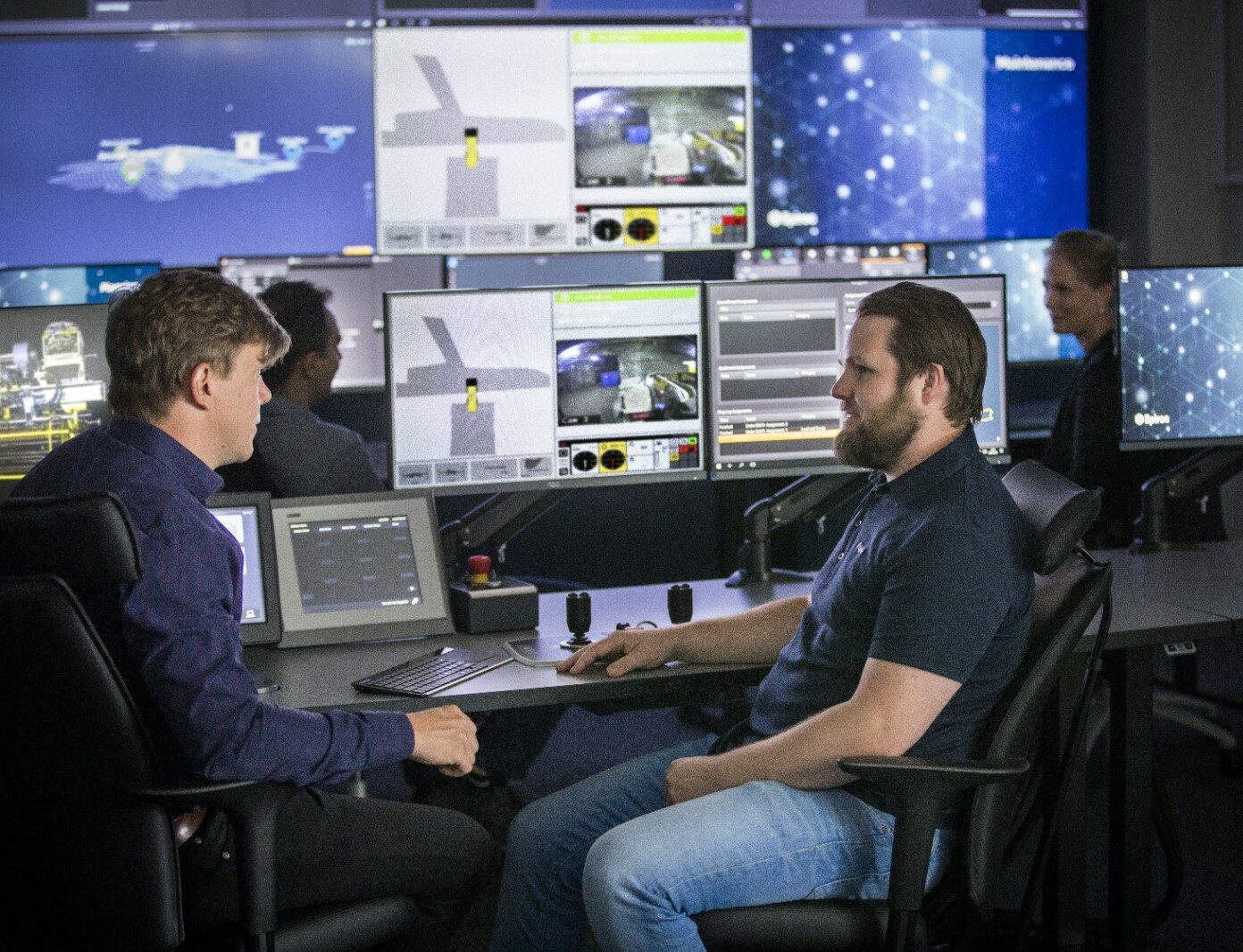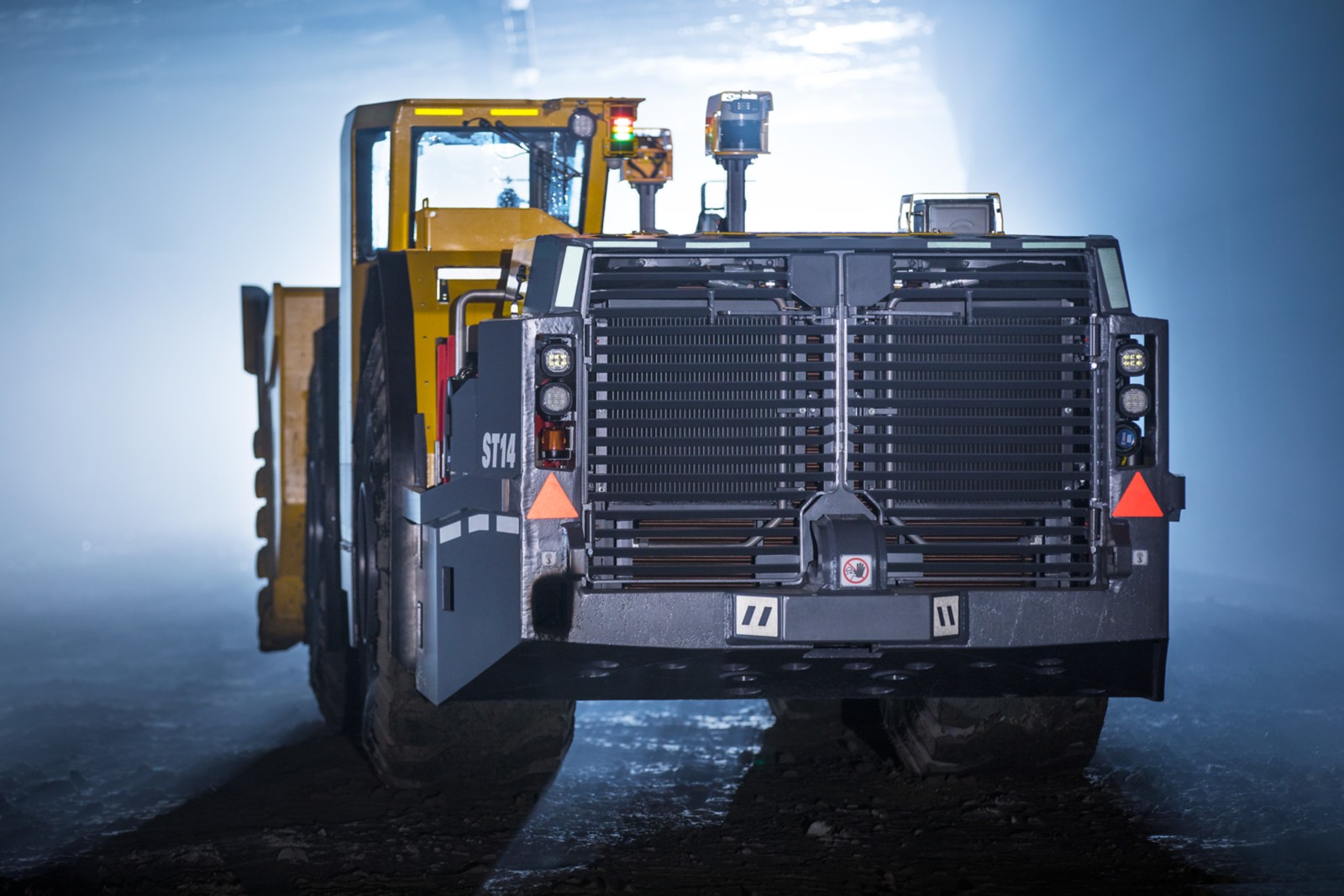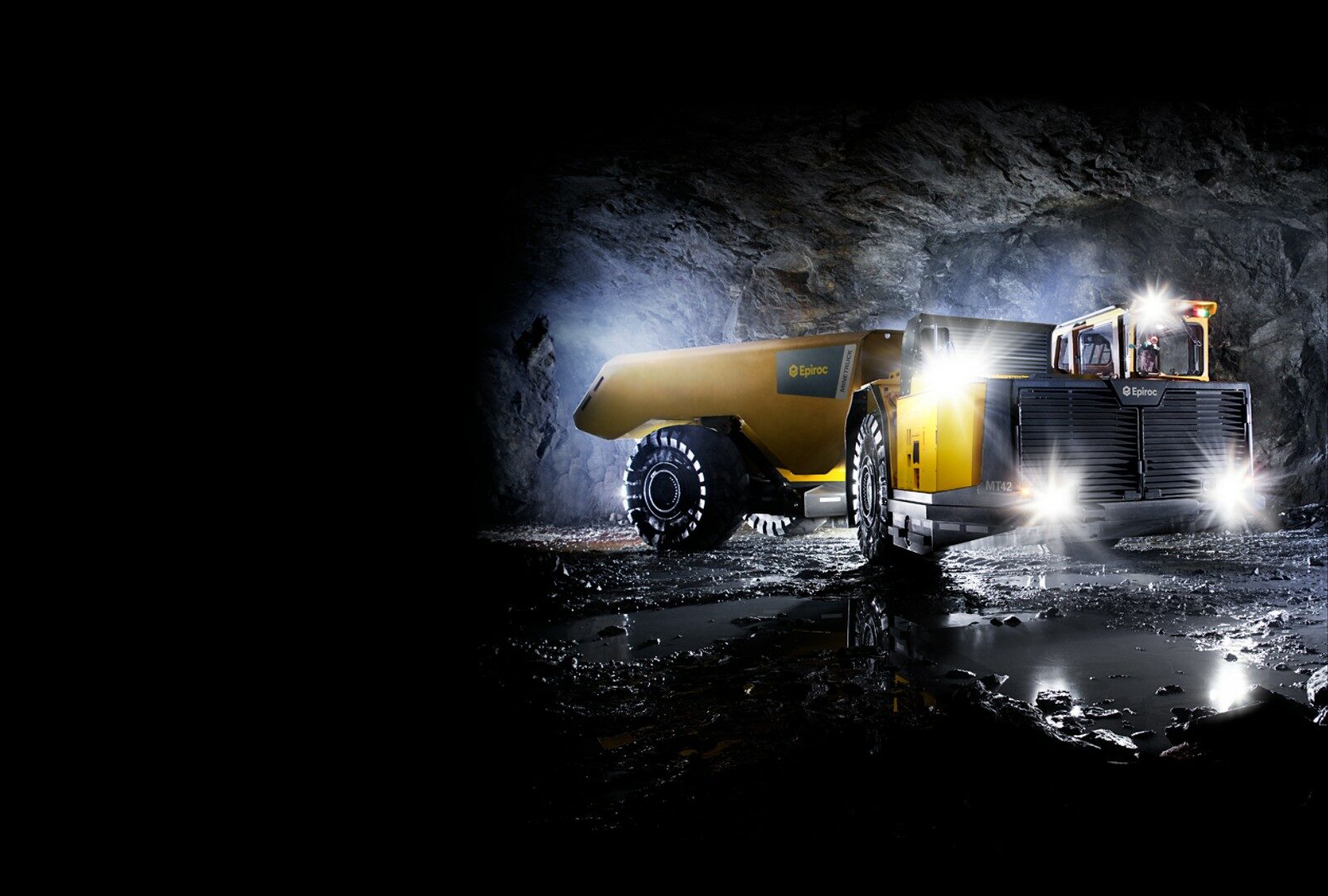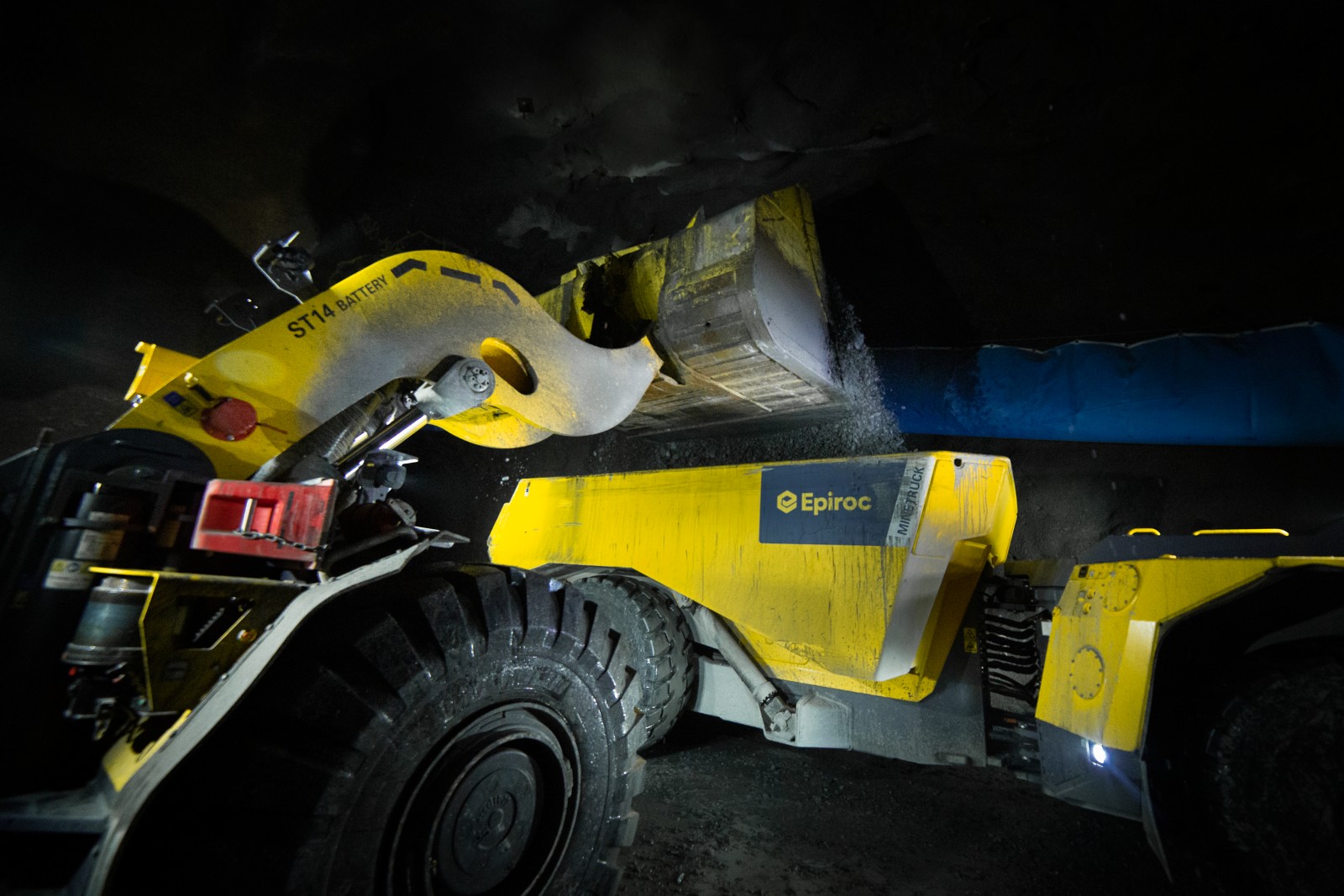
Autonomous Material Handling

“Autonomous material handling will improve the operators’ health and the work environment as well as the mining sequence, as it will allow the autonomous battery loader to enter the newly blasted area much earlier than before.”
– Anders Fröyseth, Epiroc

My name is Anders Fröyseth and I am the work package leader for Autonomous material handling at the face, and Logistics and rock stress monitoring. These two parts of the NEXGEN SIMS project are related to autonomous battery vehicles.
I have been working within different roles at Epiroc, former Atlas Copco, since 2003. Starting out as a designer, I became a design manager and now am a project leader. At an early stage of my working career I discovered how interesting it is to lead and develop a team to be able to meet given goals. The energy and motivation that builds up during a project phase is the driver for me, as well as taking a project team from good to great.
When I’m not working I like sports in general and sports with a ball in particular. I like to try new things – some years ago I tried padel and got completely obsessed with it.
Autonomous material handling for us is all about and around autonomous bucket loading and dumping into an Epiroc Minetruck underground. This includes everything from sensor definitions – systems and selection – to complete machine assembly and software development. To fulfil these tasks, we need a machine, and therefore part of the work is to prepare a battery loader for autonomous utilization. When the machine has been designed and developed, tested, and verified, the real mission starts.
The first challenge is to make the autonomous battery loader move and find out the location of the muck pile and the defragmentation of the rocks in it. When this has been sorted out, the next step for the loader is to autonomously fill the bucket, roll it back and find its way to the location where the Minetruck is parked, waiting to be loaded.
When the loader approaches the Minetruck, it needs to know that the Minetruck is there and in position to get the ore dumped into the box. When it has received the information needed, the approach and unloading sequence can take place. This sequence is repeated three times, until three buckets have been unloaded in the box, when the Minetruck is expected to be full and can take off to unload the box in a given area.
Why this matters
Autonomous material handling means an opportunity to get the miners away from the tough mining environment. Just one operator will be able to oversee a larger amount of equipment and assist if needed. The monitoring can be handled from a control room located above ground or even anywhere in the world.
This will improve the operators’ health and the work environment, as well as the mining sequence. The unhealthy gases from the blasting, that normally must be ventilated for some hours, can be ignored as they have no effect on the battery driven autonomous loader. This will give the possibility to start the loading sequence in a much shorter time after blasting and therefore save time, or allow it to be spent it on bringing more ore to the minitruck and further to the surface.
Automating the loading sequence will have a large impact on the loader’s life length. Maintenance will be easier to predict without the human factor involved and the machine performance can be improved through optimised operation.
How we work
We have split the tasks into smaller pieces to be able to get an understanding and approach every piece of the task step by step. Every operation will have its own part of the software that will be designed, tested and thoroughly compiled for success to take place. At the early stage, the software will be tested in a software environment and later on there will be sharp testing on the autonomous machines.
When the work on the software has been completed, a demo will take place to show how an autonomous battery loader will start in a position and then:
1. Enter the pile area
2. Start to detect the defragmentation of the pile
3. Get feedback from the pile and start to dig if the pile is free from large boulders, and else address the boulders and call for assistance
4. Roll out bucket and complete a bucket filling sequence
5. Roll back, retract and take off to the area where the minitruck is expected to be
6. Wait for positioning information of the truck i.e. is it in position ready to be loaded
7. Approach the minitruck
8. Unload the bucket
9. Return to start point of action and repeat until the box is full i.e. three times
Mission completed!
Our challenges
The largest challenge is the tight schedule – within a limited time frame we need to design and invent something that is new and has never been handled before. To make that happen is a challenge.
Everything from small movements to interaction between the machines will take place. The large and heavy vehicles must be considered as very dangerous equipment during the entire operating time, and we have to keep control of their movement at every single second. This makes connectivity and connection a key to success. This requires a very high level of interaction between our focus area and the one dealing with connectivity and positioning, as well as AI-powered fleet optimization. The connectivity and positioning system must always work, so that we can achieve full safety at all movements, all the time. No matter what. Safety must always come first and cannot be questioned.
Our goals
Detection of the muck pile
In this task we must choose the right sensors and systems to be able to detect and sort out the muck pile’s position and defragmentation. This sensor will tell the autonomous loader where it should start the digging process and where to fill the next bucket. It will also tell the system if it has to call for assistance in case larger boulders are detected or if the face is empty and out of ore to dig.
Autonomous bucket filling
This can be considered as a simple task, just to roll out the bucket next to the pile and fill it. But every pile doesn’t look the same and boulders can play a game with the sequence, which makes this event tricky. Filling a bucket autonomously and getting it full enough will for sure be considered as a great challenge, especially when we need to be able to repeat this successfully all the time, every single attempt.
Dumping in the box
The is the task where the interaction between the vehicles takes place, which must be considered as a special and tough challenge. The dumping has to be precise enough so we don’t harm our equipment and also accurate enough so we can fill the box as expected. The expectation is to fill a box with three buckets; that is normally how Epiroc rates a good combination of a loader and a minitruck.
It will not be possible to always place the bucket at the same spot in the box. We have to let the loader dump in pretty much three different areas to be able to empty the bucket in a proper way and with this fill the box as expected. Therefore, the tolerance of the connectivity and positioning system must be good enough, so we know where our autonomous machines are placed. It is also the base for our safety and, with that, the continuous utilization of the vehicles.

ST14 Battery – Automation Ready. The machine to be used for our demos.

The autonomous minetruck is approaching the loading area.

